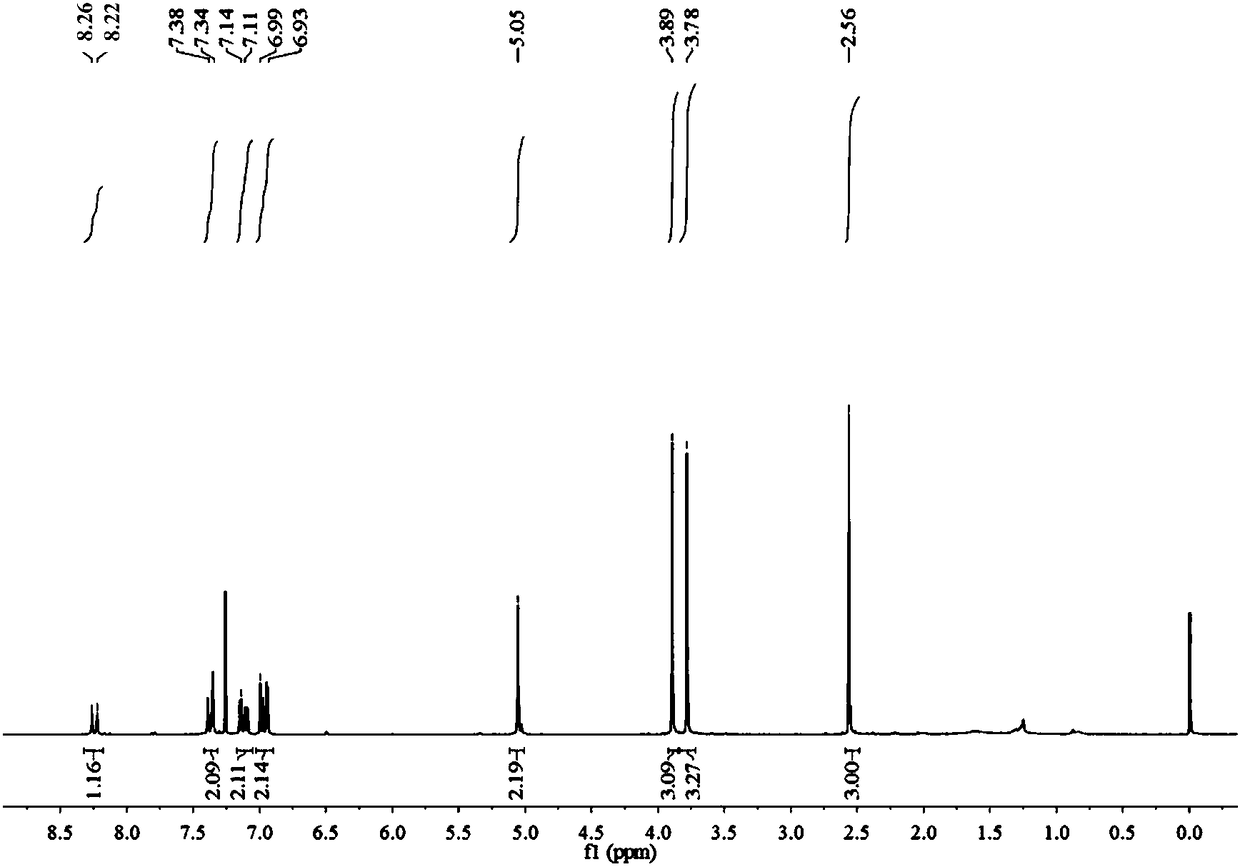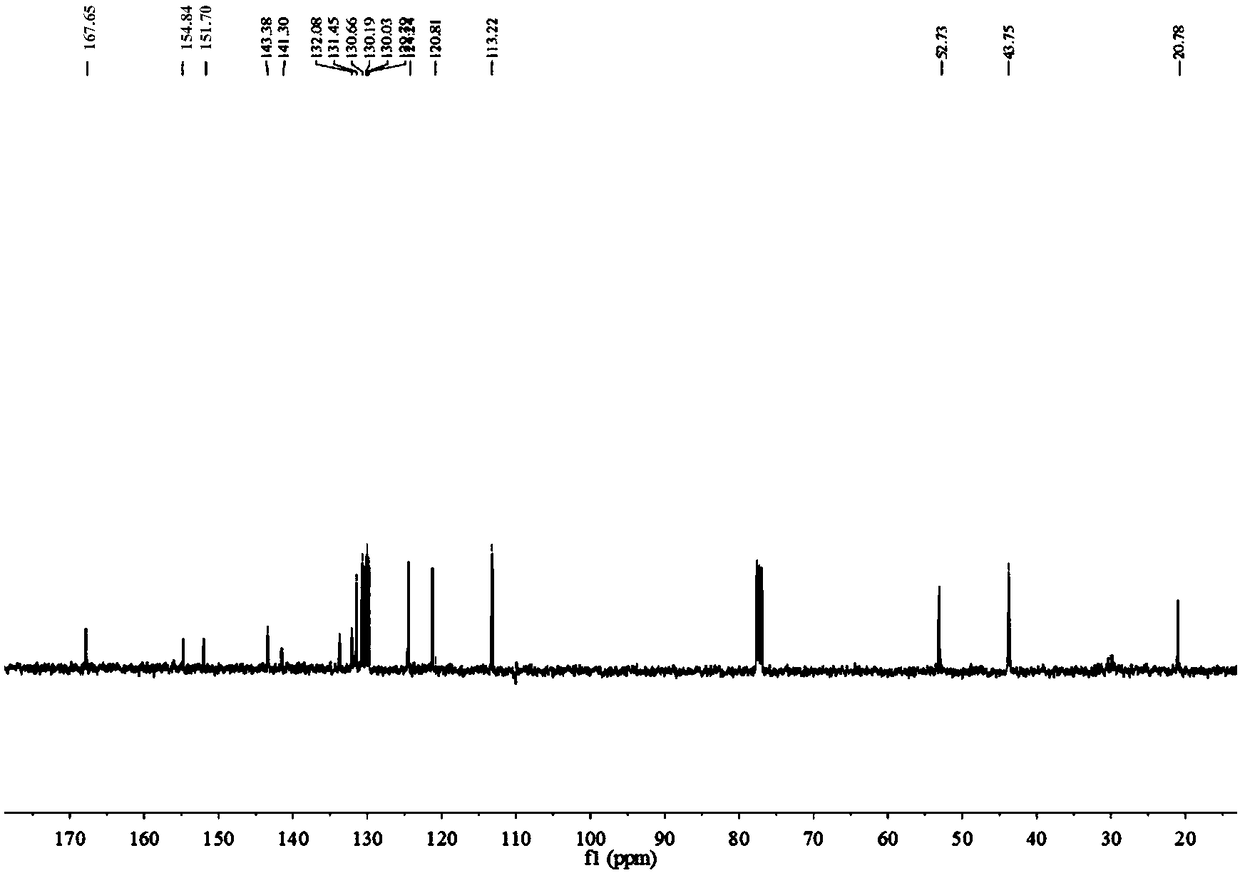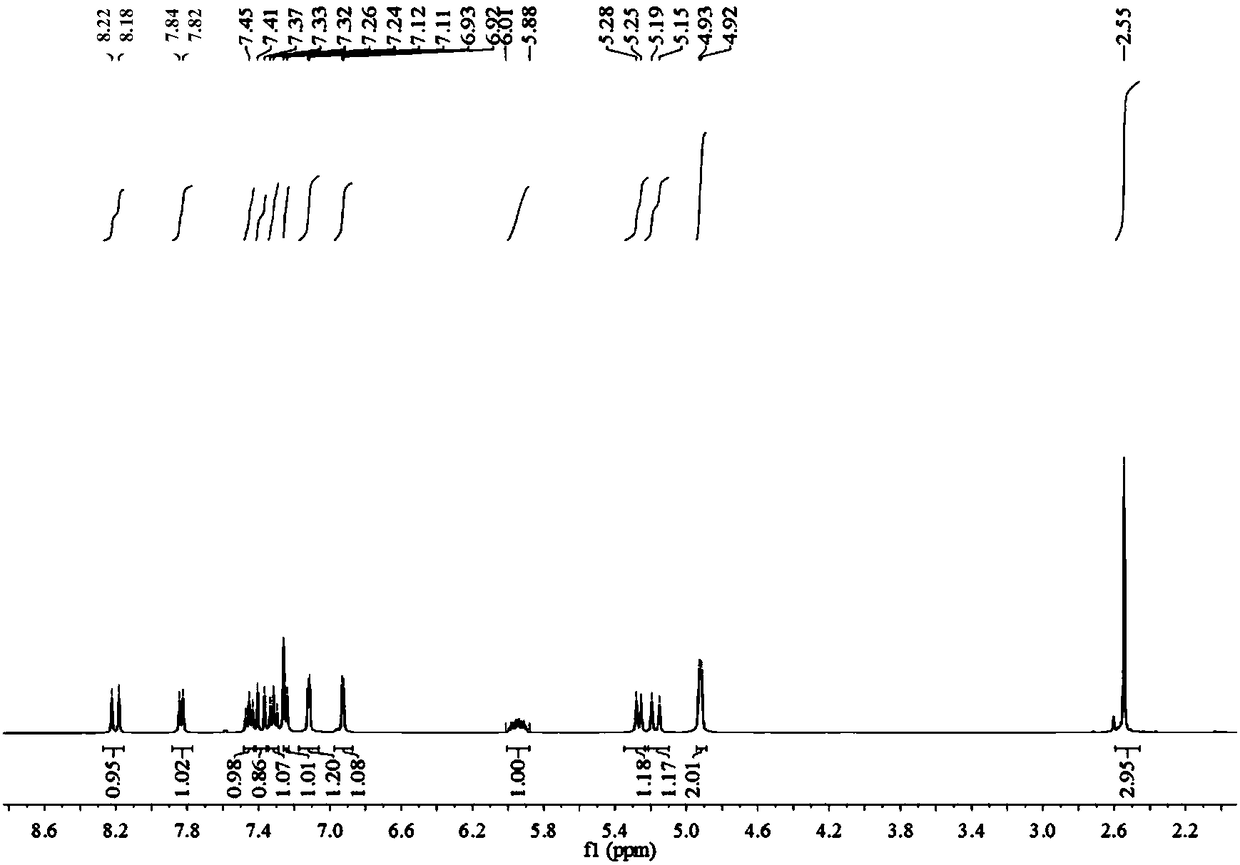Fluorescent probe based on quinoxalinone aryl sulfides as well as preparation method and application thereof
A technology of quinoxalinone and aryl sulfide, which is applied in the field of medical diagnosis, can solve the problems of slow catalytic rate and low selectivity, and achieve the effects of high selectivity, simple chemical structure and easy preparation
- Summary
- Abstract
- Description
- Claims
- Application Information
AI Technical Summary
Problems solved by technology
Method used
Image
Examples
Embodiment 1
[0054] This embodiment relates to a kind of quinoxalinone derivative, and its preparation method is as follows:
[0055] (1) 4-Methoxy o-phenylenediamine (0.1mol, 13.8g) was dispersed in absolute ethanol (150mL), ethyl pyruvate (0.12mol, 13.92g) was added dropwise under ice-cooling, stirred at room temperature for 12h, The reaction solution was filtered, the filter cake was washed with absolute ethanol, and dried to obtain white powder 1a (13.6 g, yield 86%).
[0056] (2) 1a (20mmol, 3.2g), K 2 CO 3 (24mmol, 3.31g) was dispersed in acetone, and then methyl bromoacetate (24mmol, 3.67g) was added dropwise under stirring. The reaction mixture was reacted overnight at 62°C, the solvent was evaporated, and the residue was added to water and ethyl acetate, The ethyl acetate phase was separated, separated on a silica gel column (petroleum ether: ethyl acetate = 10:1), and purified to obtain 3.0 g of 1b with a yield of 54%.
[0057] (3) Suspend 1b (2mmol, 500mg) in acetic acid, add...
Embodiment 2
[0064] Configure 1mg / mL QS-4 DMSO stock solution, and then pass through different ratios of DMSO / H 2 The mixed solvent of O dilutes QS-4 into a solution with a concentration of 10 μg / mL. The absorption spectrum of QS-4 is measured by a Thermo Electron-EV300 UV-Vis spectrophotometer, and then the QS-4 is measured by a steady-state time-resolved fluorescence spectrophotometer Fluorescence spectra and their fluorescence quantum yields were measured. The test results found that with the increase of the water ratio, the fluorescence emission wavelength and its fluorescence intensity gradually increased. In the aggregated state, the maximum emission wavelength of QS-4 reached 595nm. This result shows that QS-4 has the effect of aggregation-induced fluorescence enhancement (AIE) . The absolute fluorescence quantum yield of QS-4 measured in the aggregated state is 2.2%.
Embodiment 3
[0066] Prepare a DMSO stock solution containing 1 mg / mL QS-4 and store it at room temperature in the dark. Human cervical cancer HeLa cells were planted in culture dishes at a density of 10 5 / mL, after they adhered to the wall, Erastin was added to continue culturing for 24 hours, and the cells in the control group were not treated. Then add the probe QS-4, continue to incubate for 30min, observe the change of QS-4 by laser confocal microscope. The results showed that after ferroptosis was induced in HeLa cells, the cells emitted a very obvious green light, while the cells without erastin treatment emitted red fluorescence. figure 1 Schematic diagram of the reaction of probe QS-4 detecting ferroptosis, which changes from red fluorescence to green fluorescence. Figure 4 It is the laser confocal imaging diagram of cervical cancer cells under different conditions in Example 3, wherein, in Figure a, the first line is the fluorescence imaging of cervical cancer cells under norm...
PUM
| Property | Measurement | Unit |
|---|---|---|
| emission peak | aaaaa | aaaaa |
Abstract
Description
Claims
Application Information
 Login to View More
Login to View More - R&D
- Intellectual Property
- Life Sciences
- Materials
- Tech Scout
- Unparalleled Data Quality
- Higher Quality Content
- 60% Fewer Hallucinations
Browse by: Latest US Patents, China's latest patents, Technical Efficacy Thesaurus, Application Domain, Technology Topic, Popular Technical Reports.
© 2025 PatSnap. All rights reserved.Legal|Privacy policy|Modern Slavery Act Transparency Statement|Sitemap|About US| Contact US: help@patsnap.com



